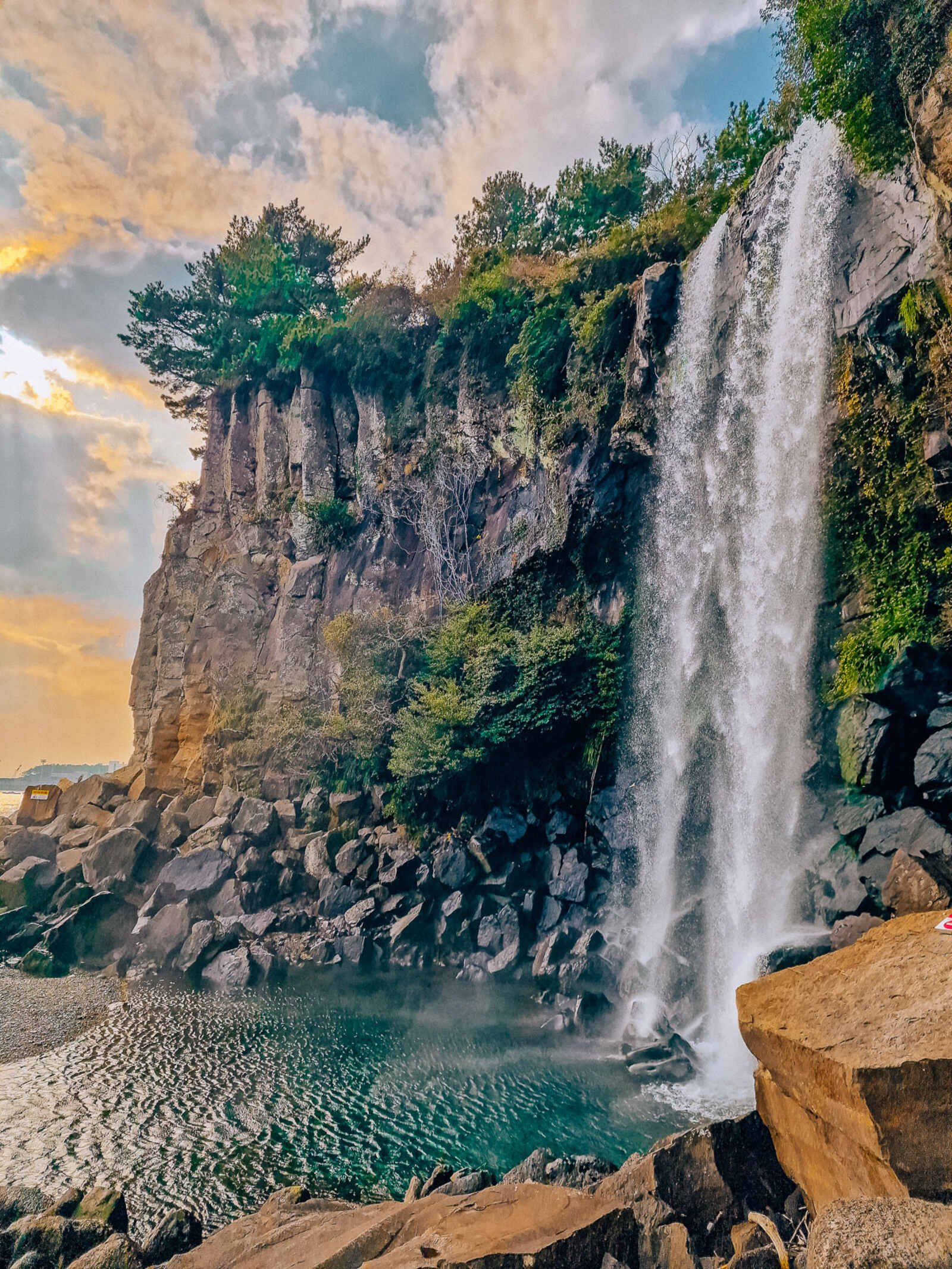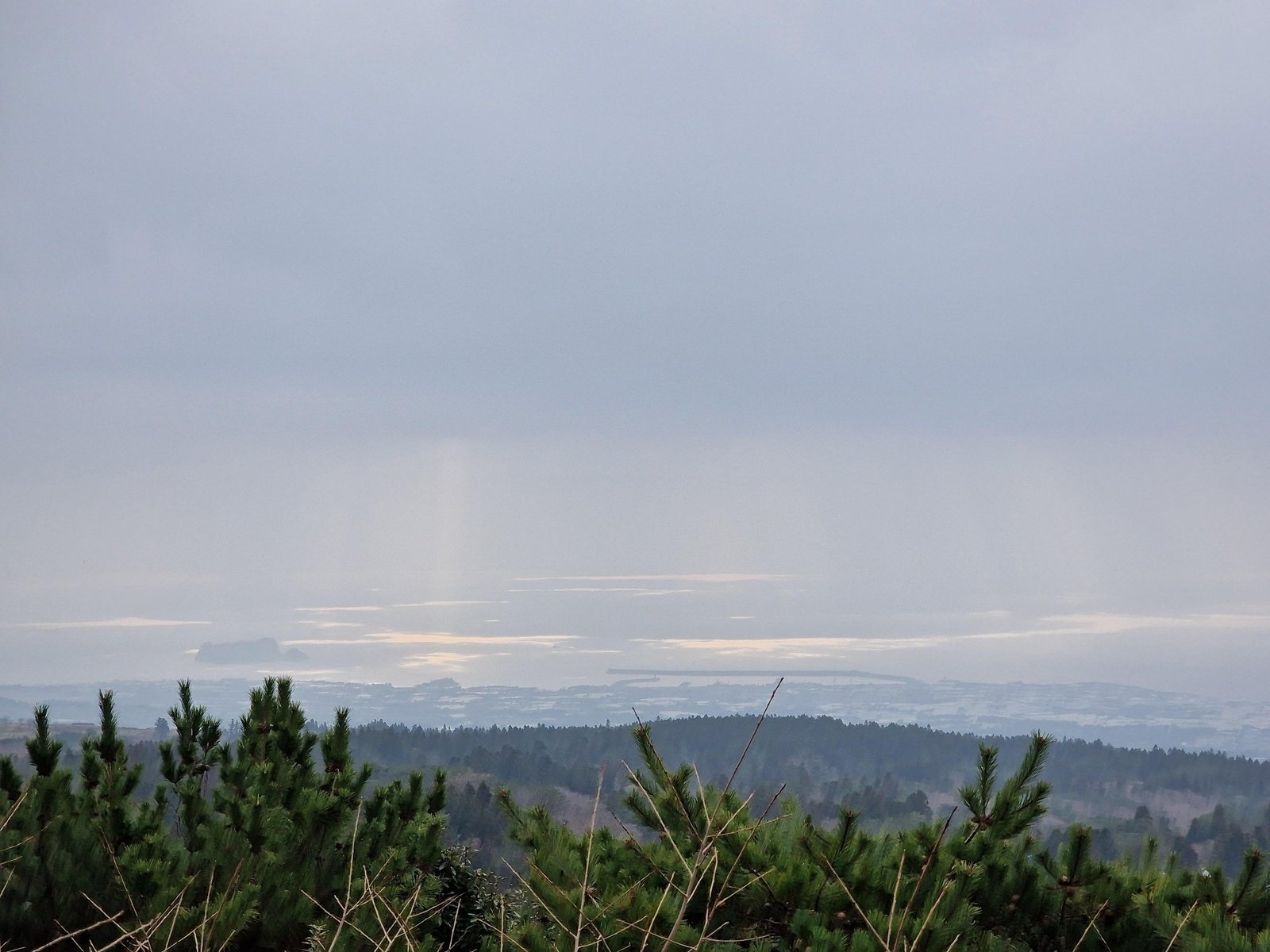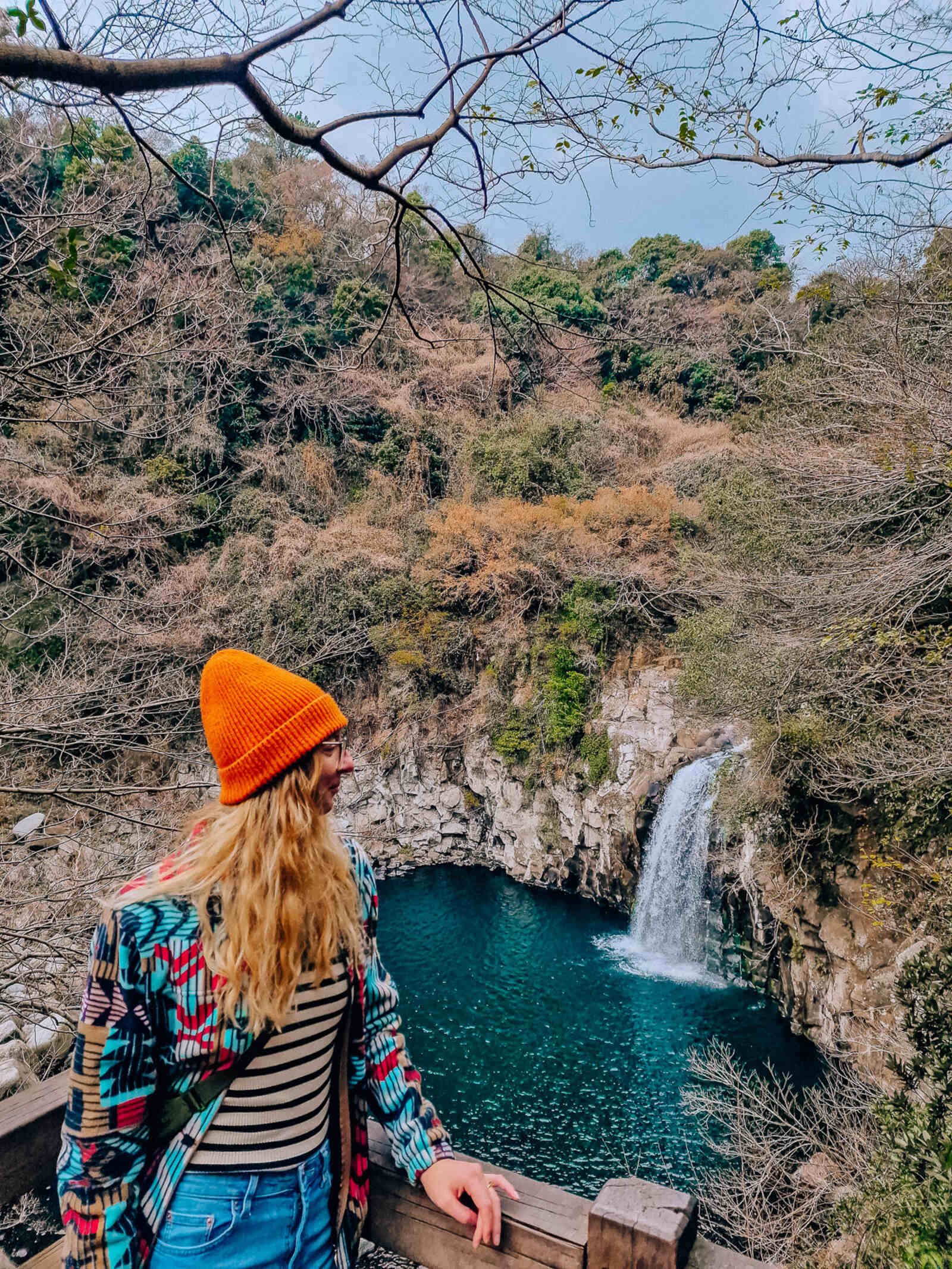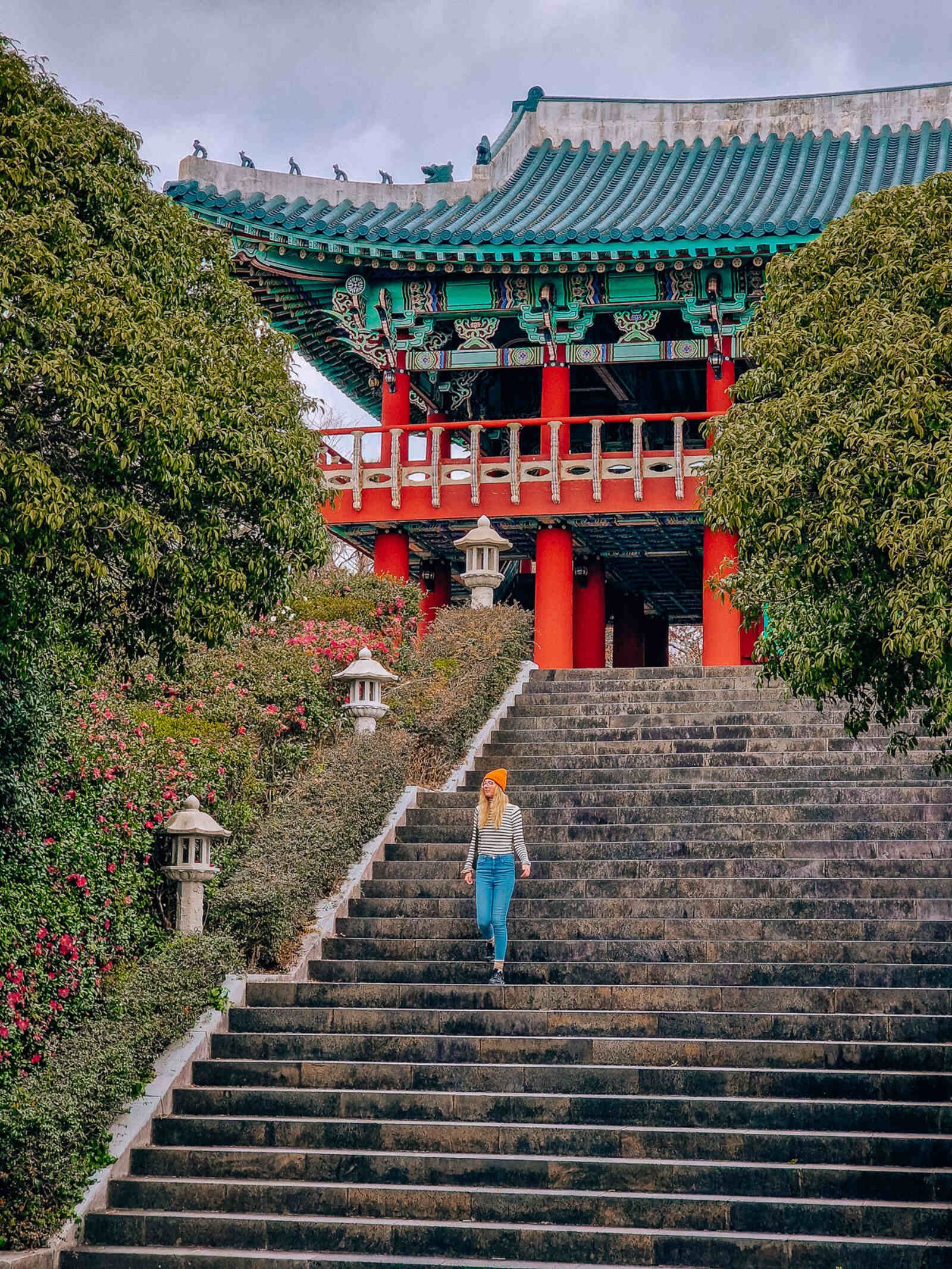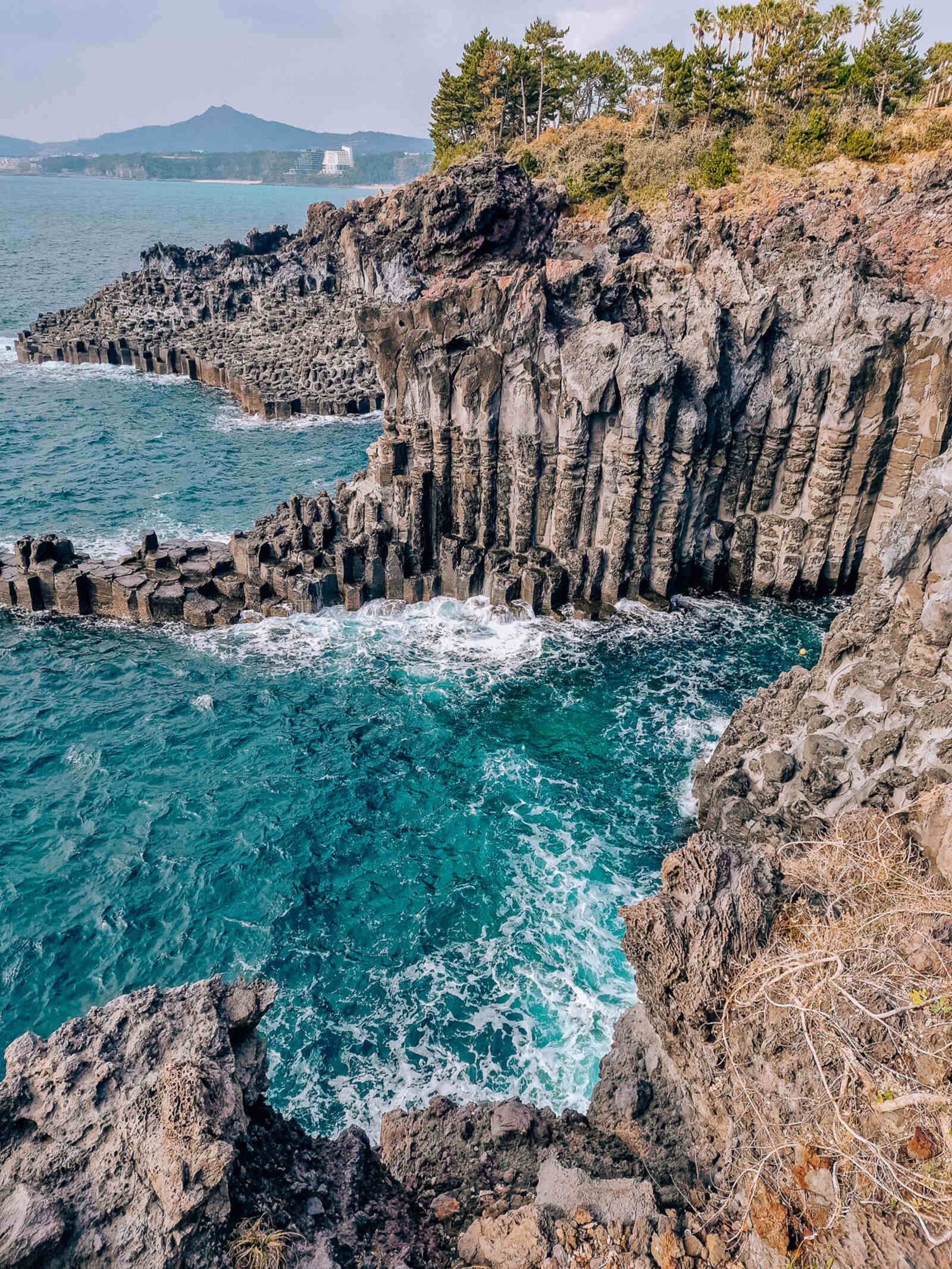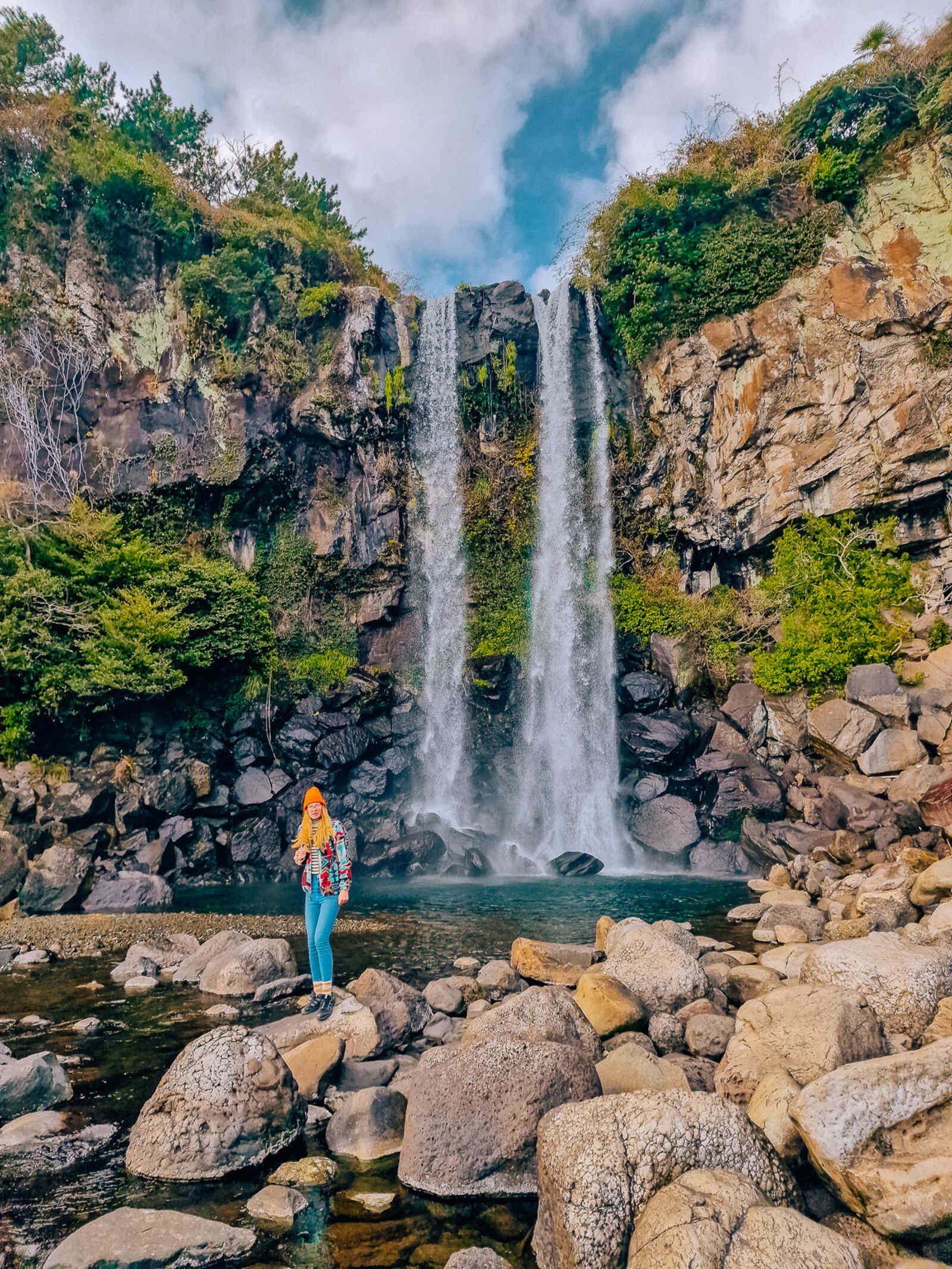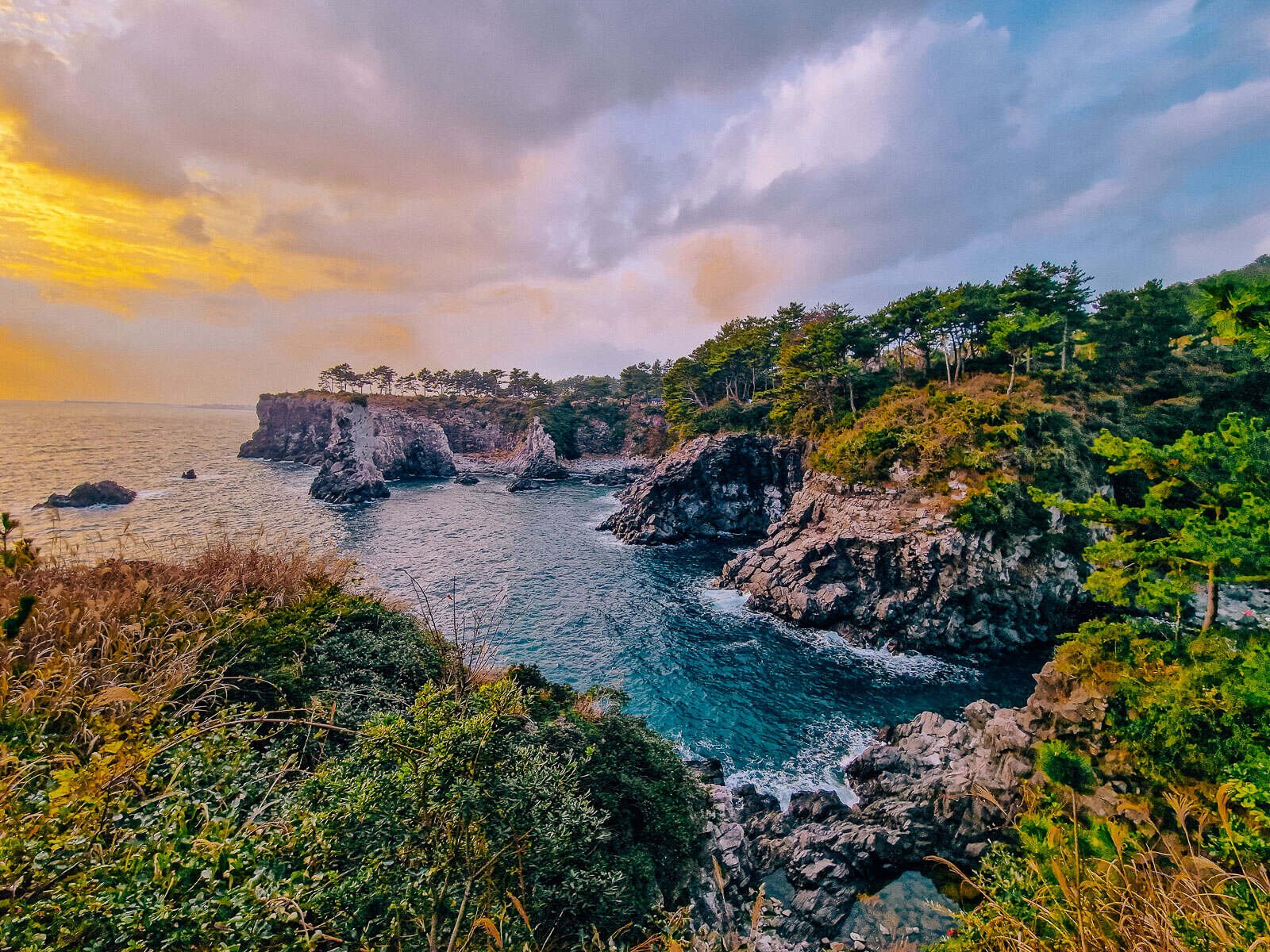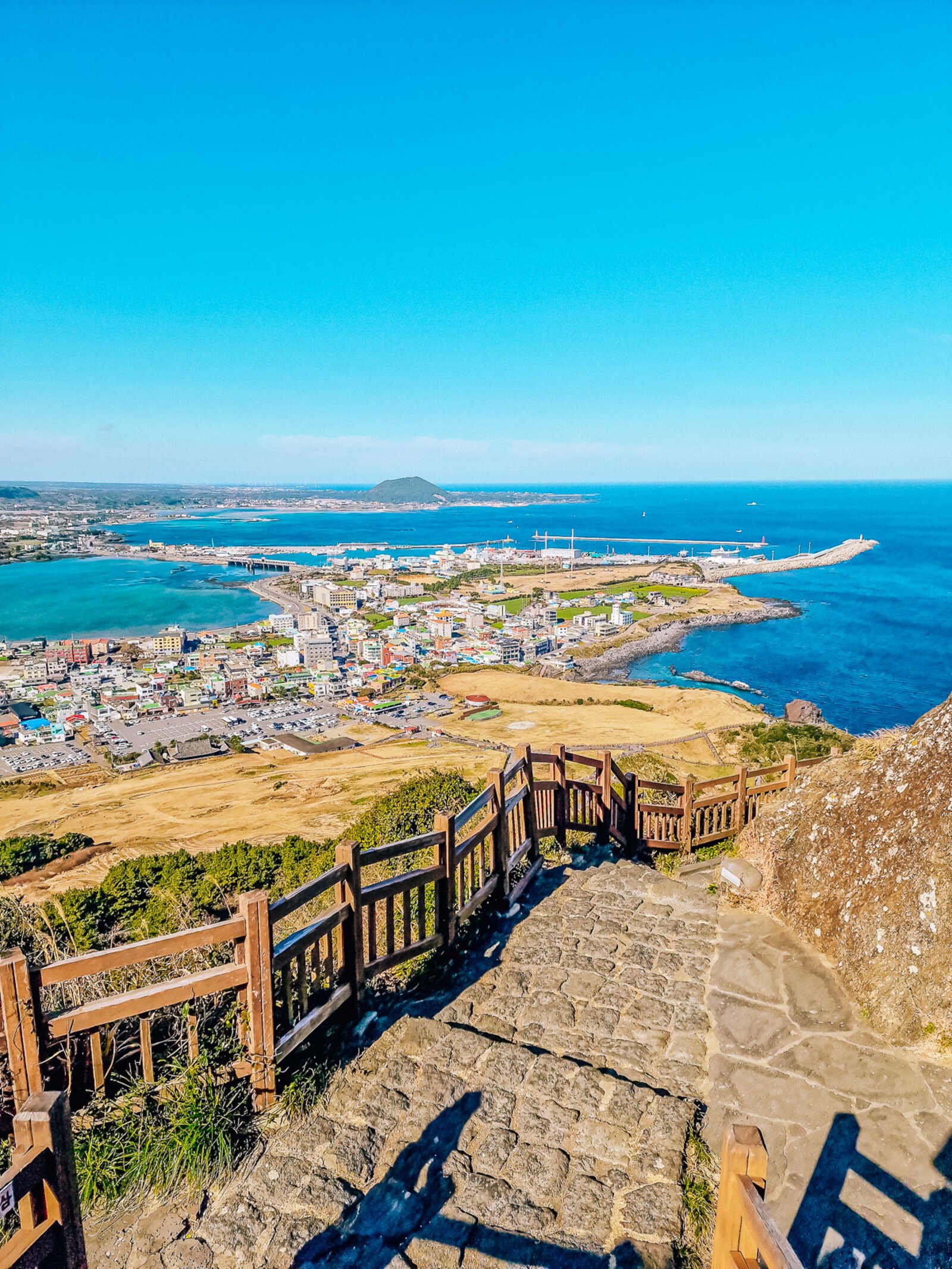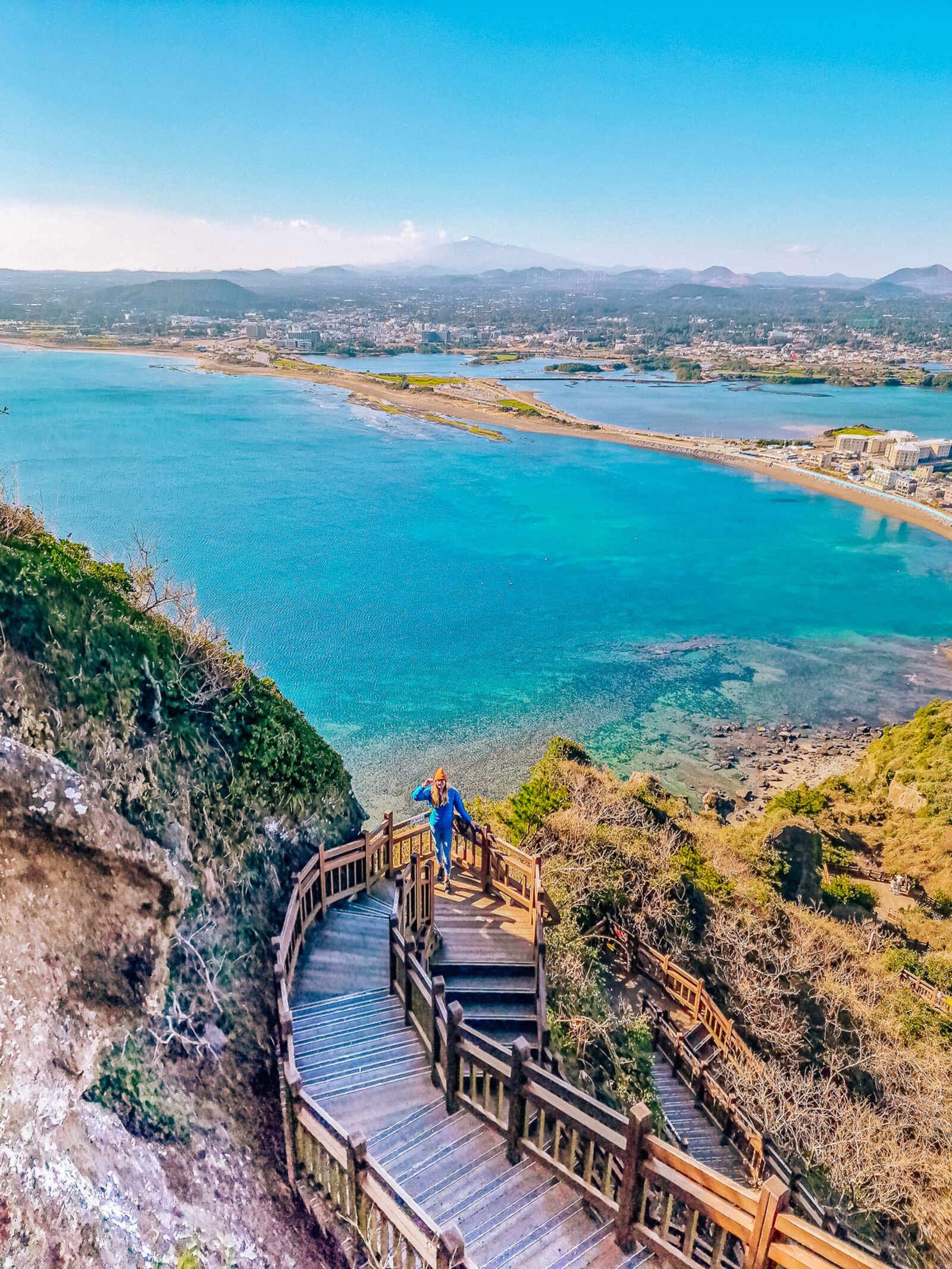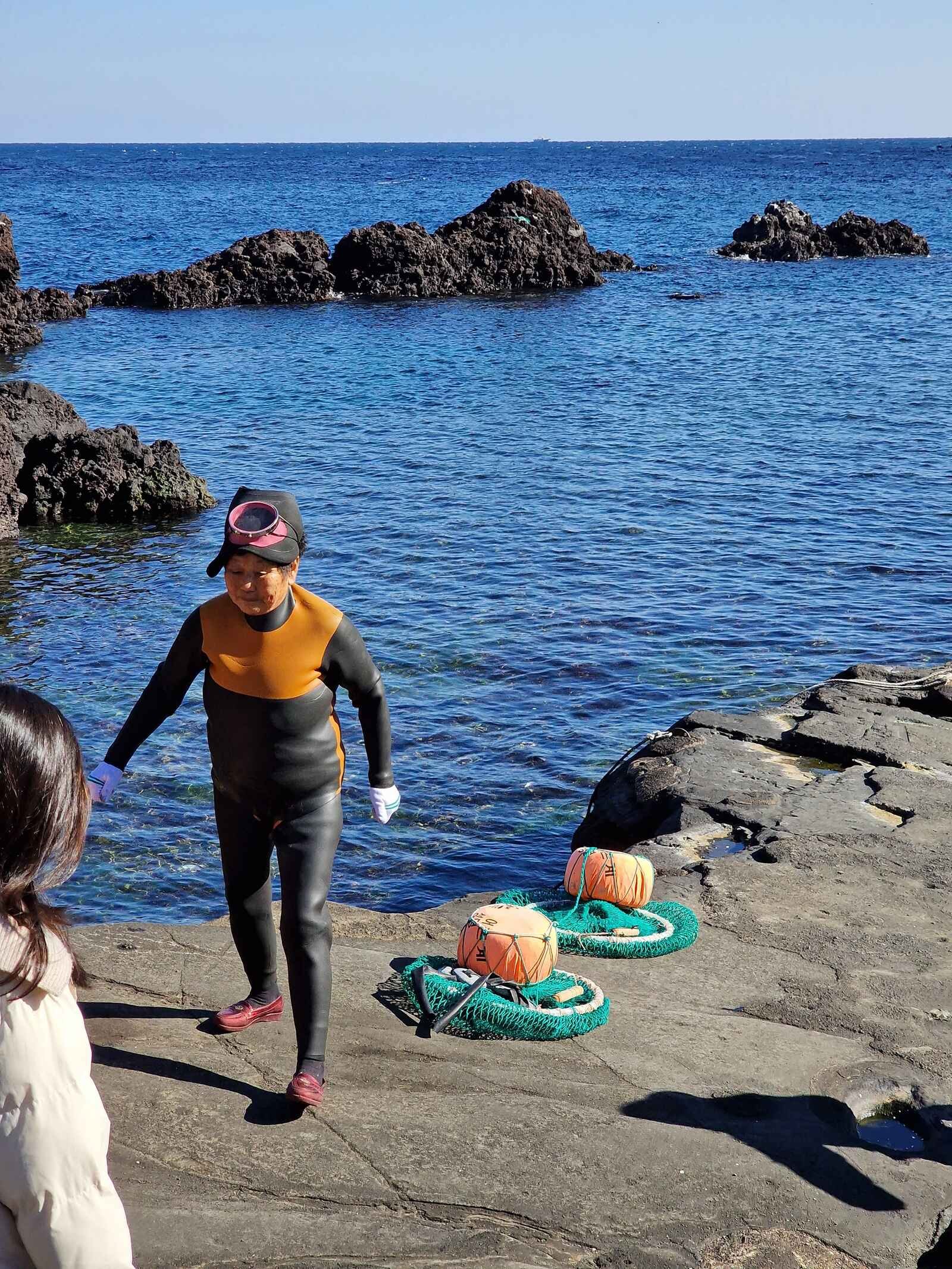For a while, I didn’t think this Jeju itinerary was going to happen.
With challenging personal circumstances having us interrupt our travels just weeks before our trip to South Korea, then a worst-in-40-years snow storm hitting us during our stay in Seoul, I had everything crossed for our flight to Jeju Island going ahead.
Thankfully it did go ahead and my eyes were opened to possibly one of the biggest hidden gems Asia has to offer.
Jeju island is a haven for nature lovers, outdoor activities and natural wonders that I just did not expect to find on such a small island in Asia. This volcanic island is a UNESCO World Heritage Site and you will find no shortage of hiking trails, waterfalls, swimming spots and scenic views at every turn.
This itinerary for Jeju Island primarily covers the North, South and East of the island. It’s only a 3 day Jeju itinerary in the hope that it can easily be fitted into your South Korea itinerary.
However I wouldn’t recommend less than 3 days in Jeju as you simply won’t have time to do it justice. If you’re planning to visit Jeju Island in the summer and perhaps include some hiking trails, I would suggest extending your Jeju itinerary to 5 days or more.
Find out more about the best time to visit Jeju Island or plan your onwards trip to Busan.
Jeju Island - UNESCO World Heritage Site
Disclosure: This post may contain affiliate links, which means I may receive a commission if you click a link and purchase something. While clicking these links won't cost you anything, they will help me to keep this site up and running! Check out the full disclosure policy for more details. Thank you so much!
Here are some suggestions to make your journey more unforgettable
Top Experiences and Tours in Jeju Island:
➡️ Western & Southern Jeju Island: to make picturesque snaps and enjoy landscapes
➡️ Jeju Top Attractions Day Tour: to visit world UNESCO sites and must-see spots
➡️ Jeju Island Scuba Diving Experience: to explore the underwater world even if you don't have diving experience
Where to stay in Jeju Island:
Renting a car in Jeju Island? Check the best offers here
Need to stay connected? Buy eSIM card here
Planning your trip? Book your flight from Seoul to Jeju in advance
About Jeju Island
Jeongbang Waterfall
Jeju Island is a Korean island off the south coast of Korea mainland in the Korean Strait.
The island itself is volcanic and is often referred to as the “Hawaii of Korea” due to its volcanic landscapes, stunning beaches and coastline, waterfalls, hiking trails and luxury resorts.
From mythical origins of symbolic and cultural importance, to its militarily strategic position for Korea, it has had many characteristics and uses over the centuries.
Now the island is famous as a UNESCO World Heritage site for its volcanic geology and lava tubes. It’s also famous for its uniquely matriarchal family structures, the famous Haenyeo: female free divers who go sea foraging for abalone, sea cucumber and other local specialities.
Jeju is also famous for its tangerine production and the iconic stone statues you will see all over the island: Dol Hareubang, meaning “Old Grandfather”.
No one knows the exact origins or symbolism of the stone Dol Hareubang but Jeju folklore believes they represent gods which offer protection and fertility. They are usually placed at entrances as they are believed to provide protection against demons travelling between realities. You can buy a small Dol Hareubang to take home with you.
Are you looking for the best activity?
- 🏞️Visit Western & Southern Jeju Island: you will see the beautiful emerald sea in the west of Jeju Island and take pictures in Camellia Hill
- 🕌Visit world UNESCO sites and must-see spots during Jeju Top Attractions Day Tour
- 🌊Get a Jeju Island Scuba Diving Experience: even if you don't have diving experience you can enjoy a deep connection with nature
Dol Hareubang
Hiring a car for your Jeju Island itinerary
I would say that hiring a car is the best way to get around the entire island and is essential for your trip to Jeju Island, regardless of the length of your stay.
While it is certainly possible to use public transport and you can still use your T-money card on the island, it takes much longer and I would suggest allowing 7 days to do so. Public transport does not allow you to reach all the locations, quieter beaches and attractions or the trailheads for all the hikes.
It is definitely possible to base yourself in Jeju-si and do day trips each day, we did consider doing this for a while and I’m linking the relevant tours or private drivers below which you might consider booking if you would prefer not to hire a car
If you are planning to hire a car on Jeju Island, here are some things to know:
1. You will need to have a valid International Driving Permit (IDP) from your home country. This is non-negotiable and they were very strict about it. There are two types of IDP, we had the 1949 one for Korea.
2. Car rental is the most popular way to get around Jeju Island. We were honestly so surprised at how huge the car rental garages were for such a small airport. That being said, because it is the best way to get around, make sure you book your rental in advance, especially during the high season. We booked with SK Rent-a-Car.
3. Pretty much every hotel had free parking available so parking was never a hassle. All the attractions on the island also had ample parking lots available. Most car parks are free but we came across some that had part of the car park free and part paid, make sure to check signs.
4. Speed limits on the island are very slow. Usually around 50KPH even on motorway type roads, allow enough time to travel between places. There are lots of speed enforcement cameras.
5. Google Maps does not work in South Korea. You can use Naver Maps to navigate but we also found the inbuilt navigation system in the car was great.
Read my guide to renting a car in Korea for more tips!
Where to stay in Jeju Island
We stayed in Jeju City for 2 nights and Seogwipo City on the south coast for 1 night. Here are the places we stayed, all were affordable, well located and had parking for our rental car.
Where to stay in Jeju-si: Hotel Sirius
Where to stay in Seogwipo: Casaloma Hotel
The best 3 day Jeju island road trip itinerary
Kicking off your 3 day Jeju itinerary in the capital city, Jeju-si. We flew in the night before to maximise our 3 days in Jeju. If you plan on doing the same I highly recommend heading to Black Pork Street in Jeju-si to try the famous Jeju Black Pork.
We ate at a local restaurant called Donhyanggi. The portions were huge, you get so many side dishes included and they even wrap your coats in plastic bags so they don’t get the BBQ smell on them - so thoughtful!
We also went to the nearby Bluebird by Magpie which is a Jeju island brewer - great beers and great pizzas (which we came back for on our last night before our flight).
Bluebird by Magpie
Donhyanggi Black Pork Street
Day 1: Climbing Mt Hallasan (or some alternatives if you don’t fancy it)
Looking down on the coast of Jeju Island
For many people climbing Mount Hallasan is the top of their list for their Jeju itinerary, for good reason!
Mt Hallasan is a dormant volcano as well as the highest peak on the island of Jeju and a popular hiking area, with several trails of varying difficulty to reach the top.
If you’re not a confident hiker, there are also guided tours of Mt Hallasan, which are a great option if you’re of reasonable fitness and health but would prefer the reassurance of a local guide to take you up the mountain.
For an easier trail, the most common way is to follow the Eoseungsaengak Trail which takes around 2 hours. But to see the crater of Mount Hallasan you will need to take the Gwaneumsa Trail or Seongpanak Trail.
Seongpanak is the longer trail of the two, however Gwaneumsa has more steps which not everyone prefers for their knees/back. So stick with Seongpanak if you prefer a slower ascent or descent. If you do the Gwaneumsa Trail in Hallasan National Park, don’t miss Gwaneumsa Temple just down the road from the trailhead.
For the crater trails, allow at least 7 hours round trip, this is why it’s the full first day of your itinerary, as this can mean using all of your daylight hours if you’re visiting in the autumn or spring!
Average times for the crater hikes is 4-5 hours going up and 2-3 hours coming back down.
NOTE - doing the Hallasan hike in the winter is not recommended unless you are well-prepared with cramp-ons and are an experienced hiker. Despite the milder weather on the island, Hallasan is the tallest mountain and still gets snow and visibility is poor. Also consider the time of year and daylight hours available. The days are also shorter and with limited daylight if you don’t start your hike early enough you will run out of light.
In autumn or winter, start your hike no later than 9am. In the summer, starting later is fine.
All year round you should make sure you have adequate supplies of food and water. You should have 1 litre of water per 2 hours of hiking. So 4 litres of water per person is the minimum for hiking Mount Hallasan - more in the hot summer months.
If you do not want to hike Mount Hallasan, and are looking for alternatives to hiking Mt Hallasan, you have plenty of options:
Hyeopjae Cave is a famous lava tube on the northwest coast of Jeju and while it is less famous than the Manjanggul Lava Tube on Jeju Island, it is just as spectacular and a great alternative as the Manjanggul Cave is unfortunately closed for renovations until 31st August 2025! You can also visit the nearby stunning Hyeopjae Beach.
Highway 1100 is a great option if you want to see Hallasan but not climb it. The 1100 road is the highest elevation road on Jeju Island and passes right next to Hallasan. With plenty of rest stops along the way, this is a great scenic drive from Jeju City to the south of the island with spectacular views.
Seogwipo Natural Recreational Forest is along the 1100 highway, just after Hallasan and is a great option if you’d like to include an easy hiking trail on your Jeju itinerary. With beautiful boardwalks among the forest trees, this is a peaceful and tranquil way to get out in nature and get those steps in on your Jeju trip!
After an active first day on Jeju, drive south to your accommodation in Seogwipo for the night.
Spend the evening in Seogwipo and don’t miss the Seogwipo Olle Market which is great for street food stalls and souvenirs or other local purchases.
For a drink or some restaurant food, we checked out Jeju Beer Fountain Main Branch - super chill and great pub style food.
Day 2: Jeju South Coast
Start day 2 on Jeju Island early for a big day exploring South Jeju. Most stops are within 10-20 minutes of each other and the walk from the car park to the sight/attraction is usually 5-10 minutes - so it’s super easy to cover lots of the things to do on Jeju Island in a small amount of time.
Seogwipo is perfectly located for your first stop of the day: Cheonjiyeon Waterfall.
Cheonjiyeon Waterfall
Make sure you use Naver Maps to map to the Cheonjiyeon Waterfall ticket booth, not the waterfall itself - otherwise you’ll end up being sent down a dead end road!
This is the perfect stop for the first thing in the morning, we got there around 7.30am and it was pretty quiet, only a handful of other people but the golden morning light was shining directly onto the waterfall and it looked gorgeous.
There is a large car park which is free, tickets to visit the falls cost 2000 won (around £1.20). The walk to the waterfall takes around 10 minutes and is on a flat, paved path. We spent about 40 minutes here in total.
After your visit, hop into the car and map to the very similarly named Cheonjeyeon Waterfalls!
Cheonjeyeon Waterfall 2
Cheonjeyeon waterfall 1 only flows after rain
Cheonjeyeon waterfall 3
This is a series of three waterfalls and walkways, plus the famous Seonim Bridge, Observation Deck and neighbouring Yeomiji Botanical Garden.
The drive from Seogwipo to Cheonjeyeon Falls is around 20-25 minutes west and there is again a large car park. Entry to the whole complex costs 2500 won (around £1.50) with an additional fee for the Botanical Gardens.
The first waterfall was slightly underwhelming as apparently it only flows after very heavy rain, however the pool is a stunning royal blue colour. And the following two waterfalls were magical - I couldn’t believe the colour of the water and how lush and vibrant the surroundings were.
Seonim Bridge is an iconic white and red Iron Bridge which is built in a surprisingly steep arc, you can cross to the other side and find the colourful observation deck, plus a fountain to throw money into - there are four animal heads which each represent a different fortune (wealth, health, love, luck) and if you stand in front of the fortune you want and throw your money into the stone bag above the animal, if it lands in the bag, you will get your fortune.
We spent about 1.5 hours here in total.
Seonim bridge
The observation deck at Cheonjeyeon falls
Jusangjeollidae is the next stop and it’s just 5 minutes down the road from the waterfalls.
This was one of the stops I was most excited about because I’ve seen these uniquely formed basalt stone columns in Northern Ireland, Iceland and Scotland but I had no idea to expect them here on Jeju.
Entry is again just 2000 won and the walking distance from the car park to the coastal observation decks is 5 minutes.
The scenic views and the dramatic black rocks in columns are stunning to see and definitely one of the more unique landscapes I’ve ever experienced.
Jusangjeollidae volcanic coastline
Make your way back towards Seogwipo again and stop at Jeongbang Waterfall. Located just to the east of the town.
This is definitely one of the most unique waterfalls on Jeju Island and actually in the whole of Asia! It is the only waterfall in Korea to fall into the sea and one of only seven to do so in the whole of Asia!
The coastal area of Jeongbang Waterfall
In front of Jeongbang waterfall
Entry is 2000 won again with a large parking lot. Although the walk to the falls is short again, there is a series of steep stone steps. Once at the base of the falls, to get closer the area is covered in large, smooth boulders which can be slippery, so please take care!
This is a great spot to grab a snack from the convenience store in the car park and have a small picnic on the coast by the waterfall, it really is one of the most beautiful places in Jeju Island.
Depending on how quickly you’ve seen all these spots, this could be your last spot of the day and I highly recommend heading to Oedolgae for sunset.
Oedolgae coastline at sunset
Oedolgae is a sea stack on the south coast of Jeju Island, very close to Seogwipo. For some reason the car park here is split into two sections, one is paid and one is free so check the signage before you park. I visited in the low season and the free car park was already full so I imagine this is a popular spot in the summer months too.
There is a beautiful coastal boardwalk trail here with palm trees, sunset and panoramic views the whole way and plenty of benches to sit and enjoy the sunset scenery.
There is a large viewing platform of Oedolgae and the boardwalk continuing along the coastline towards Hwanguji Natural Pools is stunning too.
It looks like the Natural Pools were once open for swimming and I could see metal steps into the pools but it appears the path has been closed off due to dangerous cliff sides. Nevertheless, the views are stunning and the natural beauty on this coast is mindblowing!
Oedolgae boardwalk
Dol Hareubang “Old Grandfather” Jeju statues
Oedolgae sea stack
In the evening, back in Seogwipo, check out Lee Jung Seop Street (named after a famous artist who lived there) which is a pretty lively spot for bars, cafes and galleries. Although we didn’t visit any of the galleries, we were recommended this spot for cute artisan stores, souvenirs and cute coffee shops.
Day 3: East Jeju Island adventures
The final day on this Jeju Island itinerary takes you to the most popular coast of Jeju - the east coast, for the iconic Seongsan Ilchulbong tuff cone, stunning Jeju Island beaches and the famous Manjanggul Lava Tube.
NOTE: as of January 2025, the Manjanggul Lava Tube is closed for renovations until 31st August 2025. We drove here and there was a huge sign across the entrance with this information on (see picture below). This is unfortunate as it’s the largest and most well-known lava tube on Jeju Island, however there are others you can visit including Hyeopjae Cave and Dangcheondonggul Cave on Udo island off the east coast of Jeju.
The drive from Seogwipo to Sinyang Beach took 1 hour and 25 minutes. We parked at Sinyang Beach and actually crossed the road to the bay on the other side where the white sand and enclosed turquoise bay were calling our name.
Wow this bay is stunning and I absolutely recommend spending some time here either early in your day or come back after the next stop (climbing Seongsan Ilchulbong peak) to cool off.
Jeju beaches are beautiful!
Sinyang Beach
The bay is next to the town of Goseong-ri and the calm, shallow water is perfect for paddling, the white sandy beach is absolutely stunning and honestly I did not expect such stunning beaches in Jeju island - this is what makes it such a great summer destination and it made me determined to come back in the summer months (10C was not warm enough for me to consider going for a dip!)
Continue 5 minutes down the road to Seongsan Ilchulbong Marine Provincial Park - one of the key areas of the UNESCO World Heritage Geoparks in Jeju.
This is one of the most popular places to visit in Jeju Island for a good reason! The car park is huge and it was busy in the winter so I’d imagine it gets a lot busier in the summer months!
The trail going up Seongsan Ilchulbong
The trail going down Seongsan Ilchulbong
There are two hiking trails at Seongsan Ilchulbong, one is free and one is the paid trail which is the Seongsan Ilchulbong crater hike to the Tuff Cone.
The ticket price for the Seongsan Ilchulbong Park paid trail is 5000 won for adults and 2000 won per child, however if you wanted to do the hike for sunrise (prior to 7am), the booth is unmanned and it’s free to climb to the top.
I recommend doing the crater hike to the top first. The hike itself is short, we did it in about 20 minutes (25 minutes with photo stops). While the whole trail is paved and well-maintained it is all steps, around 500 steps to be exact, so it’s a short but steep hike - especially on a hot day - make sure to have water.
There is a large sitting area at the top with observation decks viewing the crater.
The Seongsan Ilchulbong crater / tuff cone
The whole trail is one way, so you go down a different set of stairs on the way back. I personally preferred the views on the way down, the stairs were less covered by foliage so views of the turquoise blue bay below were clear and we could even see Mount Hallasan in the distance!
Once back at the bottom, I suggest taking the free trail which is a lovely walking path along the coast and down to the nearby bay.
This bay is accessible by the free trail at Seongsan Ilchulbong
In this bay, the famous Haenyeo, or Jeju lady divers, put on two shows each day, one at 1.30pm and one at 3pm, (aim for 1.30pm for this itinerary) so depending on how you’re doing for time, this is a great opportunity to experience the uniquely Jeju phenomena of these super cool women in their 60s and even 70s, free diving to collect abalone, sea cucumber, oysters and more. You can even try some of their catch for a small fee and have it cooked right there on the beach!
There are also two boat tours that depart from the beach here, one is 10,000 won per person, the other is 20,000 depending on the route you pick. We didn’t do this but it’s a great option if you want to see the crater and surrounding coastline from a different angle. Or if you aren’t able to do the crater hike, this Jeju boat tour is a great alternative.
One of the Haenyeo Lady Divers getting ready to free dive
View from the top of Seongsan Ilchulbong
After the lady divers, head to your final stop of the day Manjanggul Cave. This is the largest and most famous lava tube on the island of Jeju and is also part of the UNESCO World Heritage Site on Jeju Island.
Part of the Geomunoreum Lava Tube system, the Manjanggul Lava Tube is 7.5km long and is one of the largest lava tubes in the world, formed thousands of years ago by flowing lava.
Due to how low the ceilings are in some areas, you can only go 1km inside the tube, but the unique lava rock formations of stalactites, stalagmites, lava tubes, lava shelves and the tallest lava column in the world (7.6m) make this an epic cave experience and one of the most unique things to do in Jeju Island.
NOTE: as of January 2025, the Manjanggul Lava Tube is closed for renovations until 31st August 2025.
Start the drive back to Jeju City which is another 40 minutes from the Lava Tube. If you have time, I highly recommend a stop at Hamdeok Beach.
This is a beautiful beach with an observation pier and a couple of beautiful restaurant cafes on the beach. Check out Cafe Delmoondo if you’re ready for dinner or a snack!
Don’t forget to allow time to return your rental car at Jeju Airport before your flight time!
Hamdeok Beach, Jeju Island
Planning a 4 day Jeju itinerary?
If you have an extra day or two, here are some more Jeju Island attractions and recommendations to add to your Jeju itinerary:
Hyeopjae Beach
Hyeopjae Lave Tube Cave
Jeju Greem Cafe (2D cartoon cafe)
Sanbang Mountain
Camellia Hill Botanical Garden
Wind 1947 Go Karting
Jeju Stone Park
Saryeoni Forest Path
Seongeup Folk Village
Bijarim Forest
Other Hallasan hiking trails
Summary: The best 3 day Jeju itinerary
The great thing about planning a Jeju Island itinerary is how compact the island is. It’s so easy to cover plenty of the best things to do in Jeju Island in a short space of time, especially if you hire a car.
I hope this itinerary shows you how much is possible even with just a short 3 days in Jeju, to make the most of your itinerary and time in South Korea.
Pin for later to plan your trip.

